Storks
So you might be wondering abut the first photo in todays blog entry. Well we have seen many many Storks in their nests on top of electrical poles while driving in Spain and Portugal. But today we saw them for the first time in actual trees and also for the first time more than one nest in a single structure. This got us curious about why so many Storks? Google provided the answer. Traditionally White Storks have migrated across Spain and Portugal to Africa from Scandinavia. But in recent decades have discovered that the unprotected landfill trash heaps in this part of the world to be a reliable source of food and hence they have been able to spend the whole year here in this mild climate. As a result numbers have boomed. However there is a question over the future of these newly non-migrating Storks as there are plans afoot to do away with the landfills and hence deprive the Storks of their abundant food supply. So those that study Storks are awaiting developments. Will the Storks discover an alternative food supply in this part of the world, will they return to their traditional migratory pattern. I would say .. stay tuned .. but this development is likely to be a long process, one that Nina and I will not be watching closely.
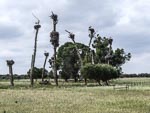
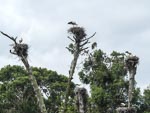
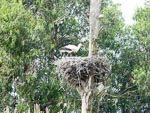
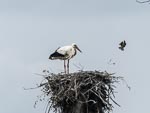
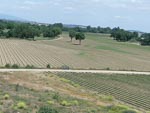
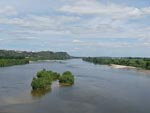
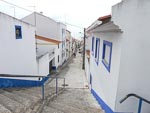
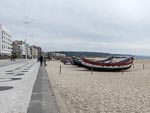
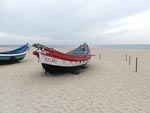
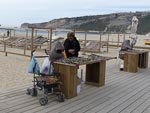
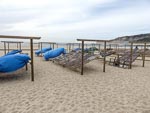
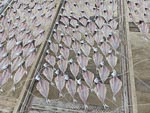
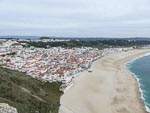
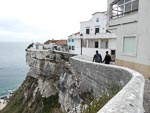
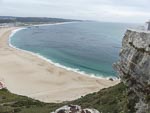
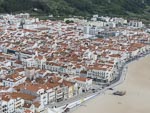
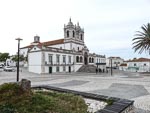
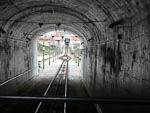
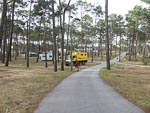
Today we made our way to a beach side town called Nazare mostly along major highways. We got to the local campground mid afternoon and set off almost immediately to explore the town. We learned from our guide book that this was once a traditional fishing village with working fishing boats pulled up onto the golden sands of the town beach, but tourism has become its major income producer. The boats on the sand are now really only decoration, though we still found racks set up on the beach and fish drying on them so that fishing is presumably not entirely dead.
The boat named Nazare caught our attention. From a plaque in front of it we learned that this was the local rescue boat between 1912 to 1977 and the two highlights of its career were the rescue of 21 fishermen from a wrecked fishing boat in 1914 and 47 from a German submarine that sank nearby at the end of 1945. I cannot imagine going out in this small boat, powered only by oars, into a storm sea to rescue anyone. I would be looking for someone to rescue me.
Somewhat unusually Nazare has a funicular to connect residents with a place called Sitio, maybe a twin town, or maybe just a suburb of Nazare. But in any case this is a small community up on top of the Northern escarpment of the bay. There were fine views of the beach and bay from the top of the funicular.
The campground was another Orbitur establishment (Orbitur Camping Nazare). It was obviously early in the season for this place as only one of the facilities buildings was open and only a small number of campers. Comfortable place (though difficult to find a flat spot). About 20 euros for the night with electricity.